
Trowlesworthy, Settlements, Stone Row & Cairn Circle
This site is featured on the Burrator 3: Ringmoor, Brisworthy Circle and Legis Pound walk. The first two photos here are of Great Trowlesworthy Tor taken ascending the tor from the north. The rest of these photos were taken on the western slopes of Great Trowlesworthy (SX57646398 Butler Vol. 3. Map 51, 8). There are two stone rows headed by cairns separated by about 100m - these have not been restored and are thought to be largely in their original state. The most southerly of these is a double stone row and cairn circle and is the first featured in these photos. This row is around 127m in length and thought to have 10 stones missing possibly due to the construction of the clay works leat in 1859. The leat crosses the stone row and has caused minimally damage to the row although this may have been as a direct result of the intervention of the Rev W.J. Coppard (see below). The cairn circle consists of 8 taller stones and is known as the Pulpit. The next site featured here is a single stone row with cairn circle. Further north along the slopes of Great Trowlesworthy are extensive enclosures and settlements. The last photo here is of the clay works leat.
These photos were taken on the 17th June 2010.
See also: Guide to Dartmoor Stone Rows
Bibliography & references
Butler, J. Dartmoor Atlas of Antiquities: Vol. 3. - The South-West (Devon Books, 1994)
Prevention of damage to the Trowlesworthy site (1860)
This account appears in the 'The Archaeological Journal' Vol. 17 (1860). It is a description by Rev. W. J. Coppard of Plympton, Devon given to the Archaeological Society of his intervention to prevent damage to the Trowlesworthy site during the construction of the leat that crosses the row.
The Rev. W. J. Coppard of Plympton, Devon, referring to the numerous so-called Druidical remains in Dartmoor, and their interest as compared with similar monuments in Cumberland and Westmoreland, which the members of the Institute had recently had the opportunity of examining, stated the necessity of exerting some conservative influence to rescue from mischievous injuries even these rude memorials in such remote districts.
"The last time" (Mr. Coppard observed) "I had an opportunity of indulging in a ramble among these interesting remains on the Moor. I had the satisfaction of saving a good example of an avenue or parallelitlion from utter destruction. It was at Trowlsworthy, near Shaugh. A party of navvies were employed in cutting a small ditch for a water-course. The wild tract around is pastured by sheep, and, so that it became necessary to make little footways, hardly to be called bridges, for the cattle as well as the shepherds. To save the trouble of getting materials at a very trifling distance, the men were carrying off some of the stones from the avenue which was near at hand, and had blasted some of them with gunpowder. Fortunately the work of destruction had only just begun; I took upon myself to stop this mischievous proceeding, and hastened to my friend Admiral Woolcombe, the owner of the property. He thanked me for what I had done, and immediately despatched peremptory orders to prevent any similar damage in future."
Trowlesworthy, Settlements, Stone Row & Cairn Circle
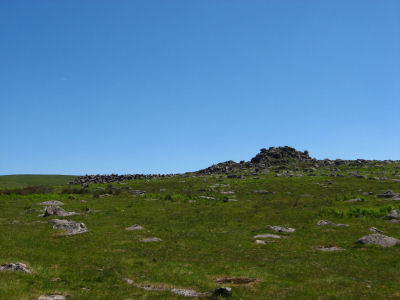
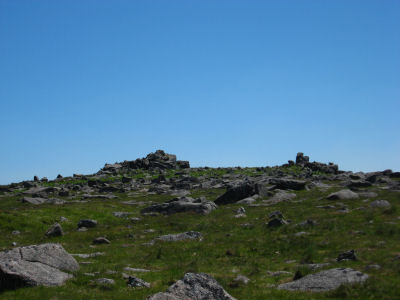
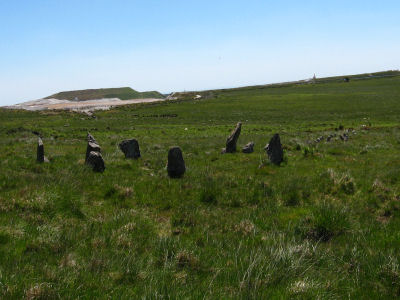
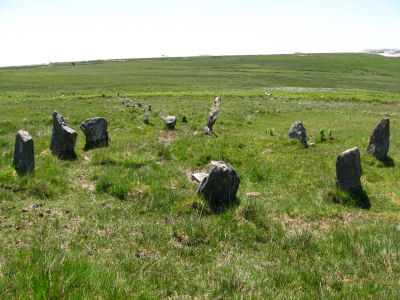


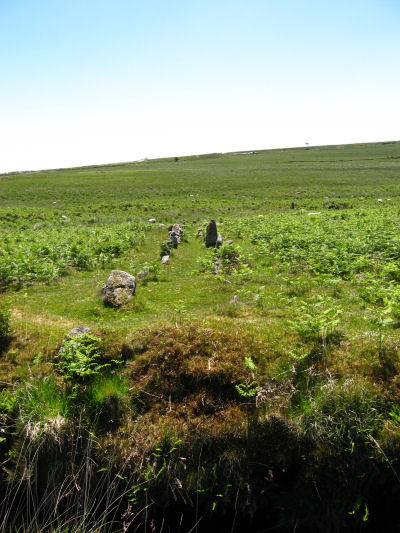
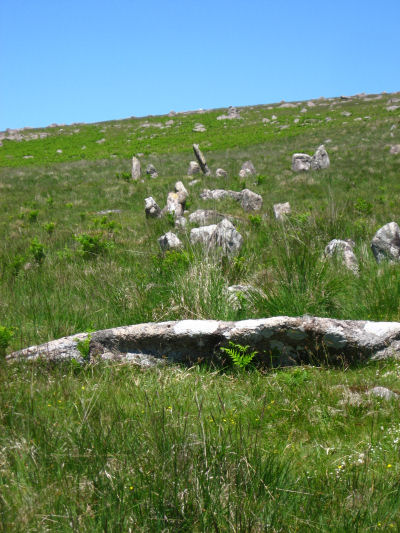
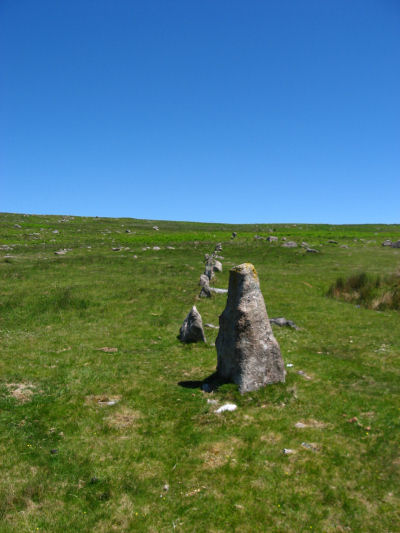
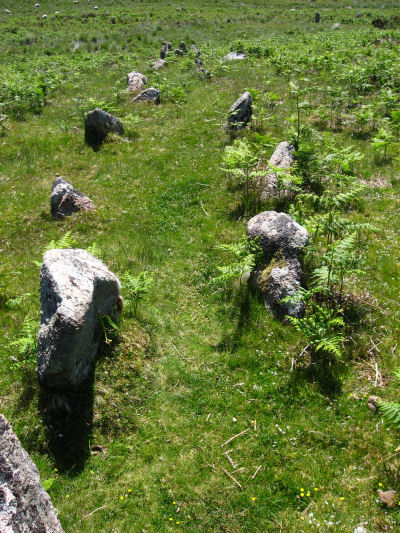

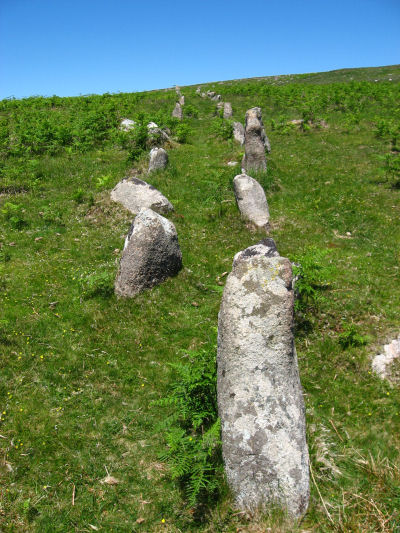
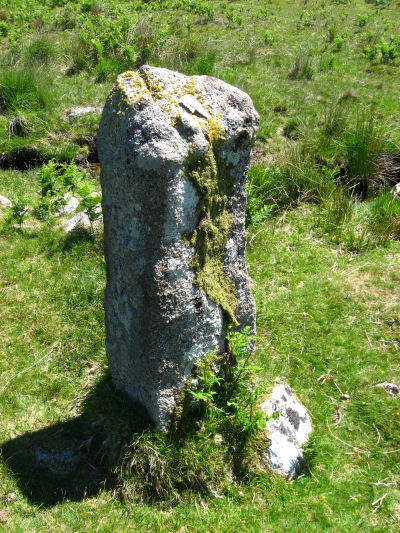




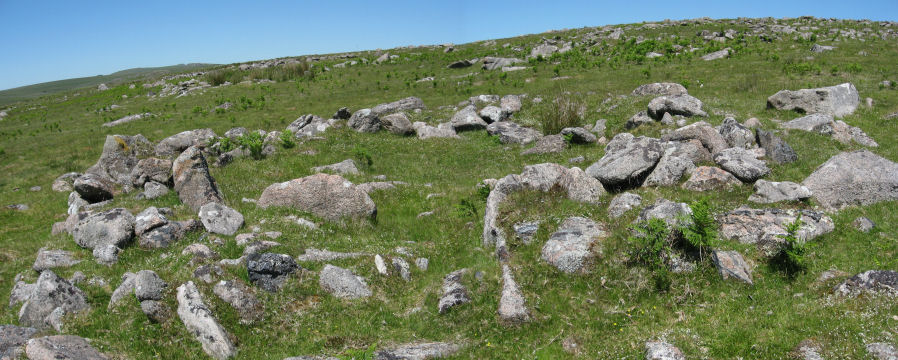
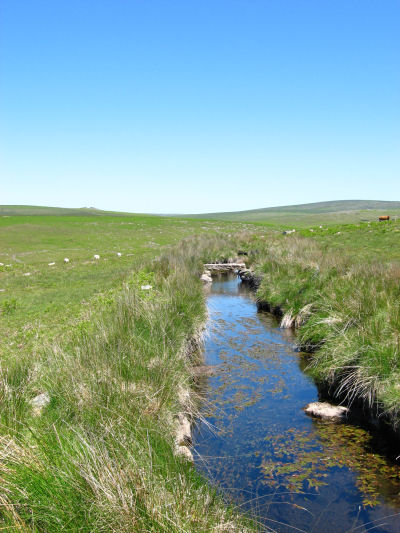
Page last updated 26/12/14